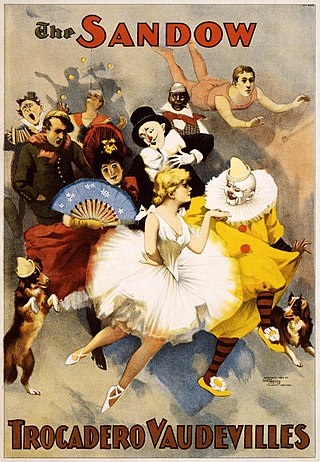
Vaudeville is a theatrical genre of variety entertainment which began in France at the end of the 19th century. A vaudeville was originally a comedy without psychological or moral intentions, based on a comical situation: a dramatic composition or light poetry, interspersed with songs or ballets. It became popular in the United States and Canada from the early 1880s until the early 1930s, while changing over time.
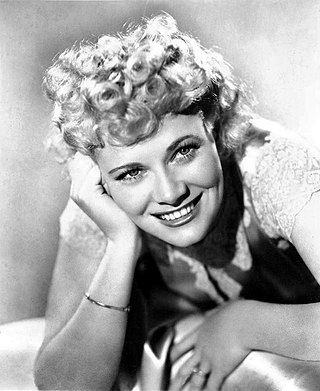
Penny Singleton was an American actress and labor leader. During her 6 decade career on stage, screen, radio and television, Singleton appeared as the comic-strip heroine Blondie Bumstead in a series of 28 motion pictures from 1938 until 1950 and the popular Blondie radio program from 1939 until 1950. Singleton also provided the voice of Jane Jetson in the animated series The Jetsons from 1962 to 1963.

The Palace Theatre is a Broadway theater at 1564 Broadway, facing Times Square, in the Midtown Manhattan neighborhood of New York City. Designed by Milwaukee architects Kirchhoff & Rose, the theater was funded by Martin Beck and opened in 1913. From its opening to about 1929, the Palace was considered among vaudeville performers as the flagship venue of Benjamin Franklin Keith and Edward Franklin Albee II's organization. The theater had 1,648 seats across three levels as of 2018.

The Pittsburgh Post-Gazette, also known simply as the PG, is the largest newspaper serving metropolitan Pittsburgh in the U.S. state of Pennsylvania. Descended from the Pittsburgh Gazette, established in 1786 as the first newspaper published west of the Allegheny Mountains, the paper formed under its present title in 1927 from the consolidation of the Pittsburgh Gazette Times and The Pittsburgh Post.

Benjamin Franklin Keith was an American vaudeville theater owner, who played an important role in the evolution of variety theater into vaudeville.

Edward Franklin Albee II was an American vaudeville impresario.

Martin Beck was a vaudeville theatre owner and manager, and theatrical booking agent, who founded the Orpheum Circuit, and built the Palace and Martin Beck Theatres in New York City's Broadway Theatre District. He was a booking agent for, and became a close personal friend of the prominent magician, Harry Houdini.
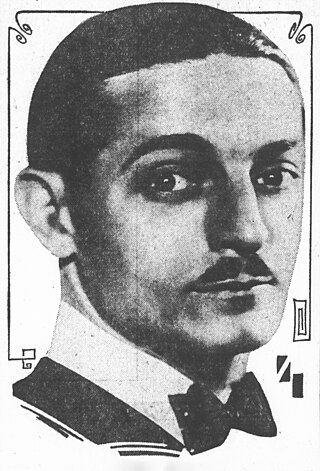
Lester M. Allen was an American actor, dancer, singer, comedian, and circus performer. After beginning his career as a child acrobat with the Barnum and Bailey Circus, he became a performer in minstrel shows, burlesque, and vaudeville. He worked as primarily a dancer and acrobat in the Broadway musical revues George White's Scandals and Ziegfeld Follies in the 1910s and early 1920s; ultimately progressing to singing and comedic acting parts. He starred as a comic actor in several musical comedies on Broadway during the 1920s and the early 1930s. He transitioned into work as a film actor, appearing in more than 15 films released from 1941 to 1950. He was killed after being struck by a motor vehicle in 1949.

The Keith-Albee Theatre is a performing arts center in downtown Huntington, West Virginia, United States.

George Fuller Golden, was a popular vaudeville entertainer at the beginning of the 20th century. He is best known for his monologues about his fictional friend Casey. He was also a prizefighter. He was the founder of the White Rats, a labor union for vaudeville performers.
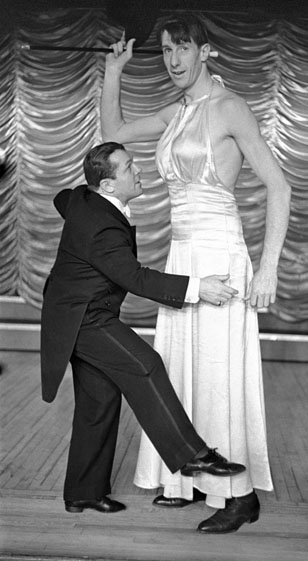
Barto and Mann: Dewey Barto and George Mann, known as the "laugh kings" of vaudeville, were a comedic dance act from the late 1920s to the early 1940s. Their acrobatic, somewhat risqué, performance played on their disparities in height; Barto was 4'11" and Mann was 6'6".

The RKO Keith's Theater was an RKO Pictures movie theater at 135-35 Northern Boulevard in the Flushing neighborhood of Queens in New York City. It was designed by architect Thomas W. Lamb and built in 1928. While the RKO Keith's had a plain three-story facade, its interior was elaborately designed in a Spanish Baroque Revival style. The theater had a square ticket lobby and an oval grand foyer, which led to the double-level auditorium. The auditorium was designed as an atmospheric theater with a blue ceiling and gilded-plaster decorations; it contained 2,974 seats across two levels. There were also four lounges and a mezzanine promenade.
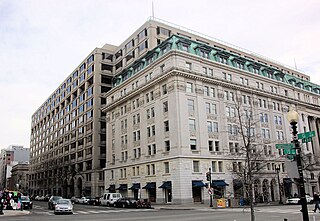
The Chase's Theater and Riggs Building, also known as the Keith-Albee Theater and the Keith-Albee Building, was a historic building located at 1426 G Street and 615-627 15th Street, Northwest, Washington, D.C., in the city's Downtown area.

Dewey Barto was best known as the shorter half of the comedic and acrobatic dance act, Barto and Mann. He was the father of actress Nancy Walker, known earlier in life as "Nan Barto".
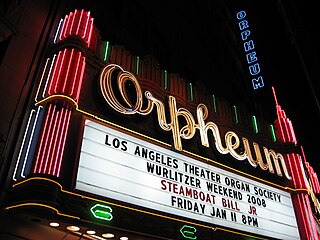
The Orpheum Circuit was a chain of vaudeville and movie theaters. It was founded in 1886, and operated through 1927 when it was merged into the Keith-Albee-Orpheum corporation, ultimately becoming part of the Radio-Keith-Orpheum (RKO) corporation.

Jack Cameron, also known as Jack Kammerer, was an American actor, singer, and acrobatic comedian whose career spanned almost five decades. He appeared in vaudeville, burlesque, film, radio, and television. Cameron was best known for his vaudeville performances, first as part of the Kammerer & Howland musical comedy act, and later as a principal comedian on the Keith-Albee circuit. He appeared in several motion pictures and could be heard on WPRO (AM) radio as the “Singing Salesman.”
The Vaudeville Managers Association (VMA) was a cartel of managers of American vaudeville theaters established in 1900, dominated by the Boston-based Keith-Albee chain. Soon afterwards the Western Vaudeville Managers Association (WVMA) was formed as a cartel of theater owners in Chicago and the west, dominated by the Orpheum Circuit. Although rivals, the two organizations collaborated in booking acts and dealing with the performers' union, the White Rats. By 1913 Edward Franklin Albee II had effective control over both the VMA and WVMA. In the 1920s vaudeville went into decline, unable to compete with film. In 1927 the Keith-Albee and Orpheum chains merged. The next year they became part of RKO Pictures.
William Hammerstein was an American theater manager. He ran the Victoria Theatre on what became Times Square, Manhattan, presenting very popular vaudeville shows with a wide variety of acts. He was known for "freak acts", where celebrities or people notorious for scandals appeared on stage. Hammerstein's Victoria Theatre became the most successful in New York.

The B. F. Keith Circuit was a chain of vaudeville theaters in the United States and Canada owned by Benjamin Franklin Keith for the acts that he booked. Known for a time as the United Booking Office, and under various other names, the circuit was managed by Edward Franklin Albee, who gained control of it in 1918, following the death of Keith's son A. Paul Keith.

Marie Saxon was an American actress in vaudeville and theatre, who briefly appeared in film.


















